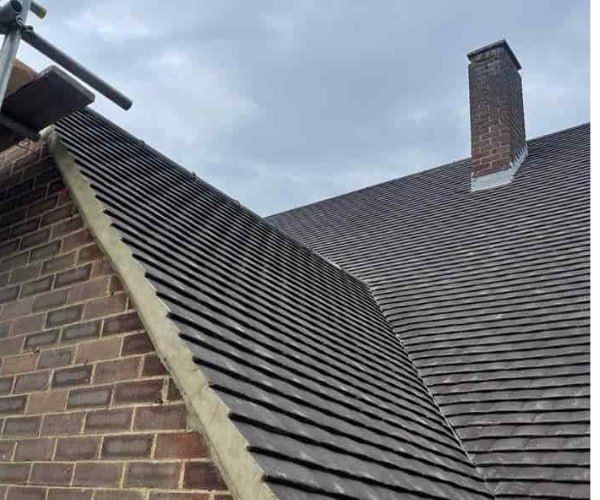Unveiling the Guardian of Dry Interiors: Roof Flashing’s Crucial Role in Leak Prevention
Introduction: Roofing systems are complex, comprising various components that work together to shield your home from the elements. One essential player in this defence is roof flashing. Often unnoticed, roof flashing is critical in preventing leaks and maintaining a watertight structure. In this enlightening blog post, brought to you by NGF Roofing Brixworth, we’ll delve into the world of roof flashing, its significance, and how it contributes to leak prevention.
What is Roof Flashing?
1. Definition:
- Roof flashing is a thin, weather-resistant material that seals joints and intersections on your roof. It acts as a barrier against water infiltration in vulnerable areas where the roofing material alone may not suffice.
2. Materials:
- Roof flashing can be made from various materials, including galvanised steel, aluminium, copper, and rubber. The choice of material depends on the specific roofing needs and the type of material used.
3. Types of Flashing:
- There are different types of flashing, each designed to address specific areas prone to leaks:
- Step Flashing: Used at the junctions of a roof and a sidewall, such as chimneys or dormers.
- Valley Flashing: Installed in the valleys formed by two intersecting roof slopes.
- Vent Pipe Flashing: Seals around pipes and vents protruding through the roof.
- Drip Edge Flashing: Placed along the roof’s edges to direct water away from the fascia and prevent water damage.
The Role of Roof Flashing in Leak Prevention:
1. Water Diversion:
- Flashing redirects water away from vulnerable areas, preventing it from seeping into joints, gaps, and openings.
2. Barrier Against Moisture:
- By creating a moisture-resistant barrier, flashing prevents water from entering areas where roofing materials are not fully water-resistant.
3. Expansion and Contraction:
- Roofing materials expand and contract due to temperature fluctuations. Flashing accommodates these movements, maintaining its seal and preventing leaks.
4. Longevity and Durability:
- Properly installed and maintained flashing enhances the longevity of your roofing system, preventing premature wear and tear.
Maintaining and Repairing Roof Flashing:
1. Regular Inspections:
- Regularly inspect flashing for signs of damage, rust, or deterioration. Address issues promptly to prevent leaks.
2. Sealing and Caulking:
- If you notice gaps or loose flashing, use roofing sealant or caulk to reseal the areas and ensure proper water resistance.
3. Professional Assistance:
- For extensive flashing repairs or replacement, consult professionals like NGF Roofing Brixworth to ensure quality workmanship.
Conclusion: Roof flashing might not always catch your eye, but its role in leak prevention is undeniable. Understanding its purpose and the critical areas it safeguards can help you appreciate its significance in maintaining a watertight home. At NGF Roofing Brixworth, we’re dedicated to providing roofing solutions that stand the test of time. From flashing installation to comprehensive roof inspections, we’re here to protect your investment and keep your home dry and secure.
Call us on: 01604 279 696
Click here to find out more about NGF Roofing Brixworth
Click here to complete our contact form and see how we can help with your roofing needs.

